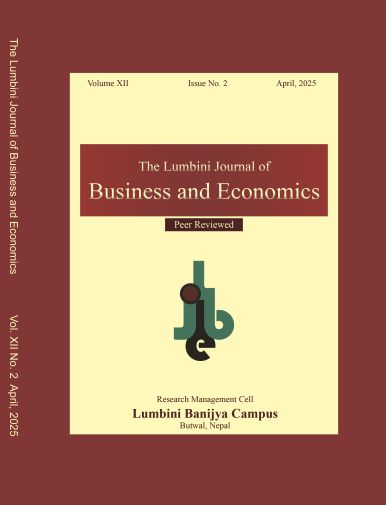Cognitive Biases and Investment Decision Making: With Reference to Butwal Sub-metropolitan City
DOI:
https://doi.org/10.3126/ljbe.v12i2.77449Keywords:
Overconfidence bias, confirmation bias, herding, representativeness, anchoringAbstract
Purpose: This study explores how different types of cognitive biases influence investors’ decisions making in Butwal City.
Methods: The study used a causal-comparative research design to examine the relationship between dependent and independent variables. Data were collected from 384 respondents using structured with a detailed seven point Likert scale and a non-probability sampling method. Quantitative analysis included both descriptive and inferential statistics including mean, standard deviation, correlation, Independent sample t test, Annova and regression analysis using the PLS-SEM method.
Results: The results shows that loss-aversion bias and herding bias play a major role in investment decisions It also showed that gender influences the link between cognitive bias and investment choices. However, overconfidence and representative bias were not found to have a significant impact on investment decisions making.
Conclusion: Investors should acknowledge how loss aversion and herding bias influence their ability to make effective investment decision making.




